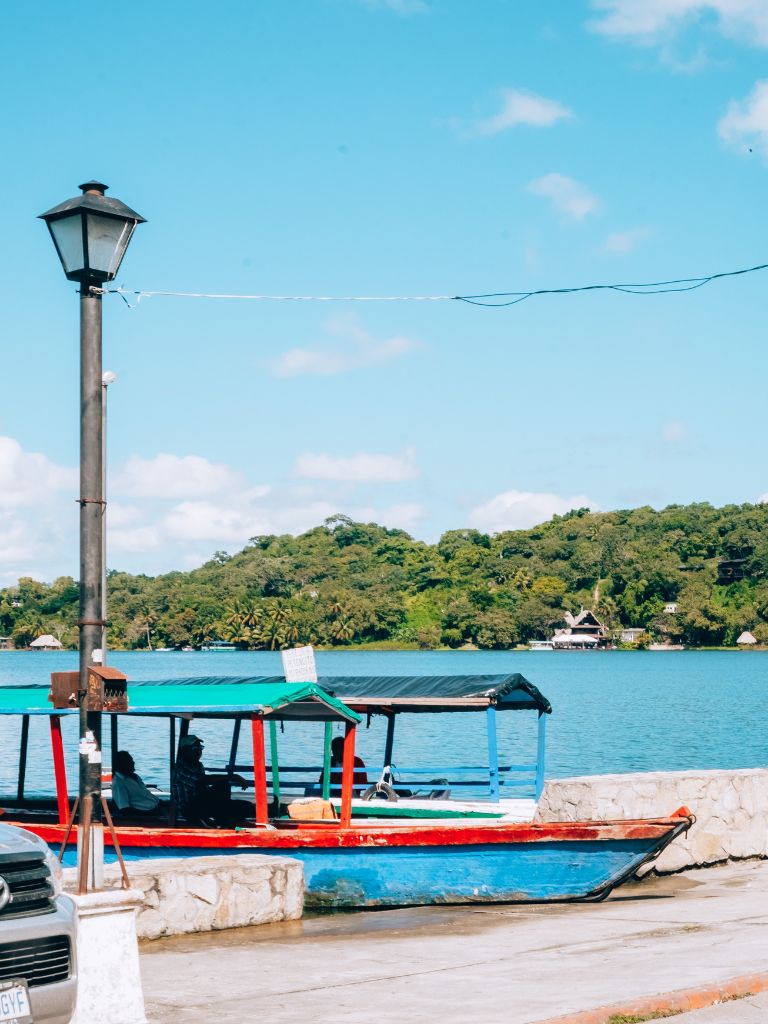21 Interrail Tips for First-Timers: Interrailing Europe (2023)
Some links in this post contain affiliate links. I receive a small commission if you use the links at no extra cost to you! Happy reading 😀
Looking for some insider interrail tips? You’re in the right place! This post details some of the best interrail tips for first time travellers using the pass.
If you’ve decided to interrail Europe this summer, you’ve made an amazing decision! Before I interrailed across Europe in 2015, I had no idea what to expect. And during my month-long interrailing trip, I learnt a thing or two about what I should have done (and what I shouldn’t).
Since then, I have travelled Europe on countless occasions, picking up extra interrail tips and advice on every trip. Below I have listed my top interrailing tips, for anyone just starting or travelling around Europe this summer.
As always, if you have anything to add or any questions, let me know over on Instagram or pop your comment in the box at the end of this post!
🚝 Need to buy your interrailing pass? I recommend checking this website for the best discounts and deals!
Interrailing Europe? Check out my other Europe posts!
- What To Pack Interrailing Europe: Packing List Essentials
- Backpacking Europe: A Beginners Step-by-Step Guide
- How to Interrail on a Budget: Interrail Europe CHEAP!


What is an Interrail Pass?
Interrailing is a great way to see Europe on a budget. Interrail passes are available for people of all ages, and they allow you to travel on any day of the week. You can also travel on multiple trains per day, making it easy to explore different countries and cities all in one single trip.
Interrail passes are valid for a certain number of days, so you can tailor your trip to your own needs. Plus, if you’re under 27 years old or under, you can get a special Youth Interrail pass that’s even cheaper!
Global passes for interrailing are the best way to see Europe – and they’re not as complicated or expensive as you might think. With a global pass, you can hop on a train and explore up to 33 different countries in Europe. There are different types of global passes to choose from, so you can tailor your trip to exactly what you want.
Whether you’re looking to backpack Europe for a week or a month, interrailing is a great option. Just be sure to check the rules and regulations before you go so that you can make the most of your trip.
Not sure whether the interrailing pass is worth it? Check out my detailed guide on interrailing passes here.
Interrail Tips: Before You Leave
| Tip
🎫 Explore a city’s attractions and save up to 50% with GoCity passes.
1) Decide on the duration of your interrailing trip in advance
Seems simple, but deciding on the duration of your backpacking trip will help you to plan your European adventure with ease. This will also give you an idea of how much you need to budget, what to pack and how many countries you can squeeze in (but more on that later).
How long do you want to interrail for? If you’re travelling from a further distance (for example the USA) you’re going to want to have enough time to enjoy it. When I interrailed the first time, I spent just over 4 weeks travelling to four different countries, travelling from the UK.
Decide on your duration, and then everything else will flow from there.
Need to book train tickets to travel around Europe? If you’re NOT buying an interrailing pass, I recommend this company for the cheapest tickets. ➡ You can check out their availability and timetables here.
2) Check out local events before you begin interrailing Europe
Whether you want to attend local festivals or events or avoid them, it’s a good thing to check them out online beforehand. For example, if you’re interrailing through Spain and want to catch the Barcelona Beach Festival in July, or Hideout in Croatia, you can plan that into your trip!
Check dates and book tickets for events and festivals like this early. This also helps to save money, as most European festivals sell tickets on a tier system. The earlier you book, the less you’ll pay!
3) Decide on a budget and start saving early
Interrailing Europe is not cheap, but it can be done on a backpacker’s budget if you’re smart about it.
Budget at least £80-100 ($100-150) per day to interrail/eurail Europe. This includes staying in hostels, cooking your own meals and pre-drinking in your hotel common room rather than the local cocktail bar!
If you want to stay in Airbnbs and dine in restaurants for dinner, you’ll need to budget a whole lot more than that!
But I have you covered – just read my full detailed post on how to interrail on a budget first!
4) Decide on an interrail pass and purchase it beforehand
Interrailing is an all-in-one pass that will allow you to enter 33 countries, but there are different types of passes to choose from. When you go to buy your pass, you will see there are different options to choose from, and you need to decide which one is best for you.
NOTE: Each pass is counted in ‘days’. Each day will more than likely be 1 journey. So if your pass covers 5 days in one month, that essentially means 5 train journeys (5 countries) in one month. However, you can board multiple trains on the same day if you need to.
There is also a one-country pass, which is only valid in one country. This means you can travel one specific country slower and deeper, really immersing yourself in the culture.
Check out my post: Is the Interrail Pass Worth it? An Honest Review for more information about the passes.
5) Book at least your first hostel in advance
One of my best interrail tips is to at least book your first hostel in advance. During the summer months, hostels in Europe will be fully booked. It will be tough finding a good hostel last minute.
Use Hostelworld to pre-book any hostels. They have excellent cancellation policies and you can usually get your money back right up until 24 hours before staying, so if you have any last-minute changes, you have that flexibility.
Whilst I can’t list every single hostel in Europe, these are some of the best, well-known hostels to stay in whilst interrailing. Simply click the link to check prices and availability!
- 🇫🇷 Paris: Generator Paris or The People
- 🇭🇺 Budapest: Maverick City Lodge
- 🇳🇱 Amsterdam: Ecomama
- 🇩🇪 Berlin: The Circus Hostel
- 🇵🇹 Lisbon: Home Lisbon
- 🇦🇹 Vienna: Hostel Ruthensteiner
- 🇪🇸 Madrid: Sungate One
- 🇮🇪 Dublin: Gardiner House


6) Book your seats for fast trains in advance
If you’re interrailing during peak times (i.e summer or Christmas), seat reservations fill up fast. You must pre-book any night trains in advance!
The interrailing app makes this easy. It even allows you to see the different seat prices, as well as whether it’s direct or not.
7) Remember your interrailing pass cannot be used in your own country
One of the main interrailing rules is that your pass cannot be used in your own country of residence. So if you need to begin your journey in London, Paris or Amsterdam, make sure you plan and budget for your journey to your starting location.
8) Download the interrail “Rail Planner” app
Luckily, there’s a way to keep everything in one place and well-organised. Download the Rail Planner app before you go, and you’ll be able to make seat reservations, change plans, find out which trains need a reservation and check out which trains you can use your pass on.
🚝 Need to buy your interrailing pass? I recommend checking this website for the best discounts and deals!
9) Take emergency cash
The majority of countries on your interrailing trip will use Euros. Whilst I’m a big fan of using Monzo whilst travelling, it’s always good to have emergency cash on you.
It’s also important to know that some countries do not use Euros. For example, Sweden uses SEK, Norway uses NOK and Turkey uses the Turkish Lira. It’s not hugely important to worry about, but just something to bear in mind.
| Tip
🎫 Explore a city’s attractions and save up to 50% with GoCity passes.
10) Know what to pack and be prepared
Europe is expensive! Forgetting something in your luggage is the last thing you need. Use my Interrailing Packing List to help pack your bag before you leave.
My biggest tip is to pack light. Lugging around big backpacks on long journeys and train stations is not ideal!
11) Be open to night/sleeper trains
I know this may sound daunting, but sleeper trains in Europe aren’t that bad. I prefer overnight trains, as you can save money on accommodation and won’t miss any days of exploring.
Only use night trains for longer journeys. If you use them for a 2-3 hour trip, you could end up arriving in a new city at 3/4am, and if you’re a solo traveller this isn’t ideal (although still manageable!). Don’t forget to pre-book your sleeper/night trains in advance.
12) Make a rough itinerary and route plan
One of my best interrail tips is to make a rough itinerary or route for your interrail trip. This means you won’t miss out on anything you want to see.
Decide on the countries, cities and areas you most definitely want to visit, and start from there. You can then look at each train journey. Look at a map of Europe. Use common sense and think – is it going to work travelling France one day, then Turkey the next?
You may want to plan your route to visit neighbouring countries to make it easier for yourself or plan less so you can soak in the culture. Get some paper and a pen, or open a new Google Doc, and get planning. And book your flights to your starting destination early. They’ll be cheaper!
| Tip
🎫 Explore a city’s attractions and save up to 50% with GoCity passes.

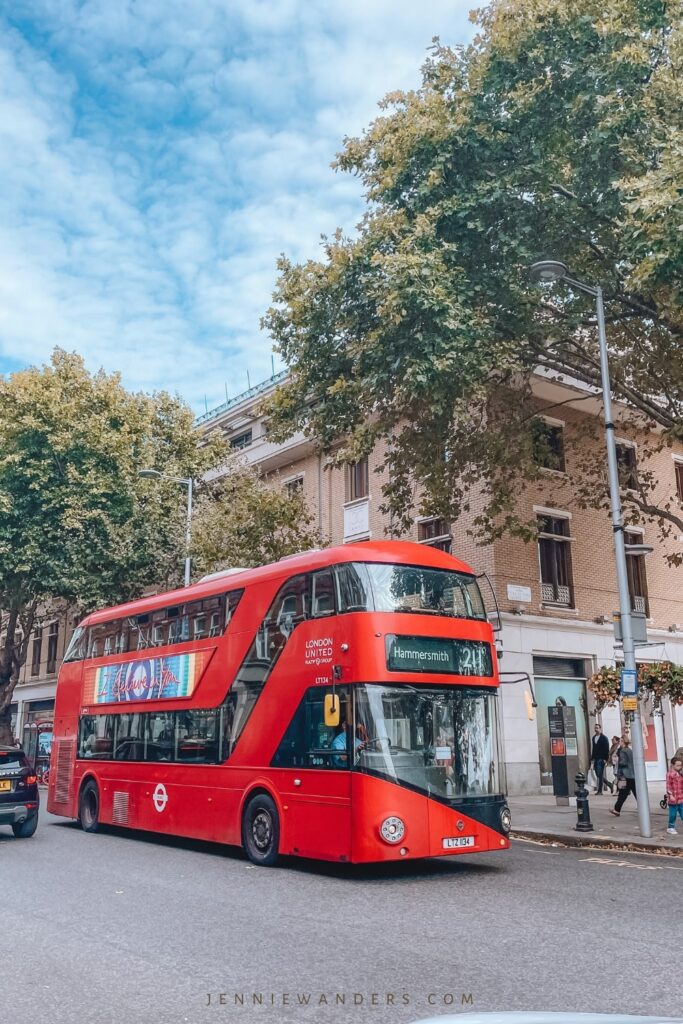
Interrail Tips: During your European trip
13) Be open to things going wrong!
And this isn’t just for interrailing! Things ARE going to go wrong. And that’s ok!
If you do change your plan or schedule, don’t panic. Reassess and re-evaluate what you can do next. Your interrail train journeys can be cancelled and altered easily. They can be changed at the click of a button, so don’t worry too much if you’ve changed your mind or want to alter your route.
🚝 Need to buy your interrailing pass? I recommend checking this website for the best discounts and deals!
14) Make friends in hostels and free walking tours
If you’re solo travelling, or even travelling in a couple or with a friend, you might want to meet people along the way. Even when Tom and I travel together, one of our favourite things to do is meet like-minded travellers!
Staying in hostels is one of the best ways to make friends, or attend a free walking tour!
15) Stick to your daily budget as much as possible
Don’t spend all of your cash before the end of your trip, or you’re going to need to pick up work along the way. And picking up work in Europe isn’t easy (plus illegal on a tourist visa). Although if you need a quick online paying job, check out my ebook for making money online!
Hostels in Europe are usually around £15-30 a night, even in a shared dorm. If you want an Airbnb, you’re looking more at £80-100 a night. Make sure you’ve budgeted for this before you spend all of your money and run out.
For activities, food (fast or home-cooked), drink, socialising and everything in between, budget at least £30-50 a day. Of course, you can have cheaper days, but it’s better to be on the safe side.
16) Don’t be afraid to be spontaneous
One of the best things about the interrail pass is the flexibility! The passes are designed to be used as ‘hop on, hop off’ tickets, so your trip can change as much as you desire. And trust me, spontaneity is what makes a good travel story!
17) Use Google’s ‘My Maps’ for offline directions
This is a great tool when you’re solo travelling and need to make sure you don’t get lost! My Maps has a function to download directions and maps that can be used with little or no signal. It’s also great to bookmark or ‘favourite’ what you want to do in each individual location.
18) Make sure your phone is unlocked
With the EU rules ever-changing, sometimes it can be easier and cheaper to just pick up new SIM cards in different countries. Most places in Europe do have Wifi, but if you need your data for work or something specific, SIM cards are easily available in shops all over Europe.
Some UK networks are still available to use across Europe (as far as I know, O2 doesn’t charge any extra for travelling Europe), but some networks such as EE have added data roaming charges.
Alternatively, check out eSIMS in the country you’re visiting. I recently bought an eSIM in Mexico, and it was a lot easier than swapping physical SIM cards.
If you’d prefer to use eSIMs (like myself), I recommend pre-buying with this company. They have easy, downloadable eSIMs for countries all over the world. You can check prices and availability here.
19) Use Google Translate for conversations and written text
One feature of the Google Translate app that I use almost everywhere is the written text translator. Simply hold it up to any foreign language (street signs, menus, shop windows), and it will instantly translate it for you!
20) Apply for a Worldpackers experience if you’re running out of money
If you’re flexible with time, I’d recommend checking out the opportunities on the Worldpackers volunteering platform. Here you can browse opportunities to swap volunteering work for accommodation. It’s perfect if you’re running out of money!
If you haven’t signed up to Worldpackers yet, you can get $10 off using my code JENNIEWANDERS.
21) Take snacks for your train journeys!
It may be simple, but snacks always make a train journey more exciting.

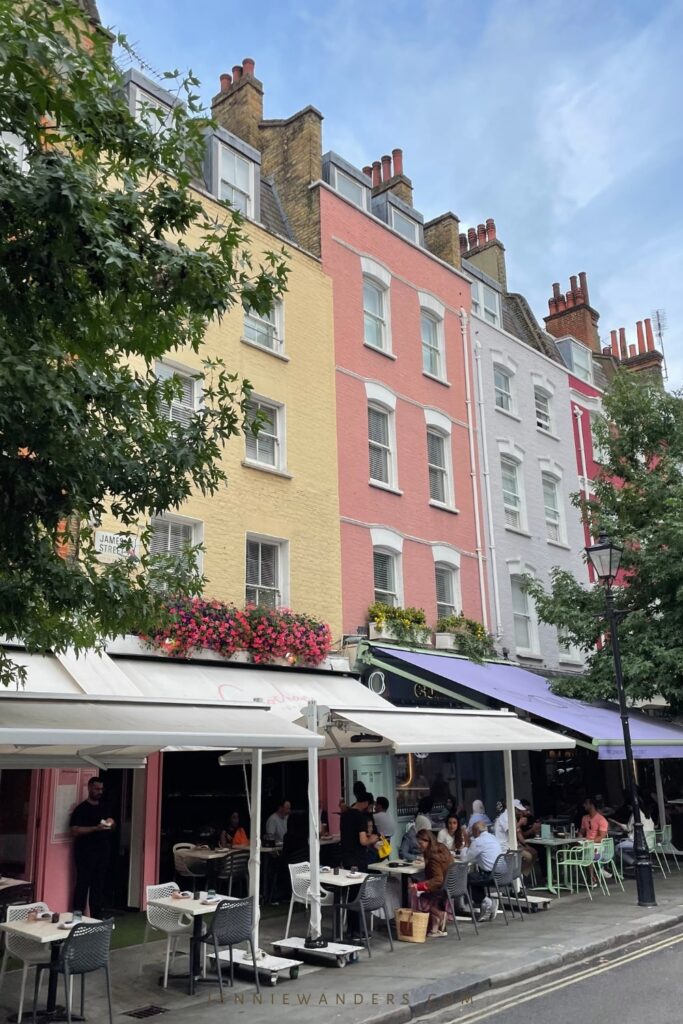
Interrail tips: FAQs
1) How long should I interrail for?
This is down to you and how many countries you’d like to visit, how long you have off of work, and what you want to do on your interrail trip. A standard interrail trip is 3-5 weeks, but you can purchase tickets to last up to 3 months.
Work out where you want to go, what you want to do, and your budget. You’ll then be able to decide your duration easily.
2) How much should I budget for interrailing?
Budget at least 70-90 Euros per day for interrailing. This includes accommodation, transport, food, drink, activities, socialising, and everything in between. However, this is for if you’re staying in shared dorms and hostels.
If you are staying in Airbnbs or hotels, you will need to budget at least £150 a day.
Interrailing CAN be done on a budget, but you just need to be smart. Read my detailed interrailing on a budget post here.
3) Can you sleep on the interrail trains?
Yes. There are designated sleeper trains or night trains for specific interrail journeys. These can all be viewed and booked on the interrailing app. You will need to prebook your sleeper train or night train seat reservation in advance. This will also help you to save money.
🚝 Need to buy your interrailing pass? I recommend checking this website for the best discounts and deals!
4) What time of year should you interrail Europe?
Ultimately, interrailing Europe at any time of year is going to be expensive. But if you’re sensible and travel during off-peak times, you may be able to save some money.
☀️Avoid peak summer time (June – August) in Europe, because this is when European schools break up, and locals will want to take their summer holidays. Big tourist attractions like the Eiffel Tower or Oxford Street are 10 times busier, so you can expect to share your interrailing trip with hundreds of other people.
🍁 Travelling during spring or autumn (March-May/September – November) are a great time to backpack and interrail Europe. They’re quieter and children in Europe are in school.
❄️ Winter can be pricier in Europe, as most places will get snow. London at Christmas is one of the most magical times of year, but wow, it’s expensive!
5) Is interrailing Europe safe?
Yes, interrailing is safe. But like anywhere in the world, you have to be vigilant and use common sense. But on a whole, Europe is a safe place to travel for both solo travellers and solo female backpacker.
6) Do I need a SIM card to interrail Europe?
Yes, it’s worth downloading an eSIM on your phone to ensure you can use it for directions and avoid roaming charges as soon as you arrive.
ESIMs are easy to download and ready to use within a few minutes of purchasing! Plus, there are eSIMs available for the entire continent of Europe, so there’s no longer a need to hunt down free Wifi! ➡ You can check out the prices and packages for eSIMs here!
7) What tours should I do whilst interrailing Europe?
Looking to book a tour whilst interrailing Europe? Tours are one of the best ways to see the hidden gems of the country you are visiting. If you’re travelling during peak season, I highly recommend pre-booking your tours to ensure you don’t miss out!
When travelling, we use this company to book our tours. Tours include skip-the-line tickets to the world’s most iconic attractions, walking tours by top local experts, immersive food and beverage tours, cooking and craft classes, bucket list experiences, and niche offerings you won’t find anywhere else!
➡ You can check out available tours in Europe with prices here!
8) Do I need a car to interrail Europe?
The whole point of interrailing is to travel Europe by train, so it’s unlikely you will need to hire a car. However, if you head to the Italian countryside, or want to take a day trip, you may want to hire a car; especially if a group of you have got together in a hostel and want to travel together.
If you’re looking to hire a car in Europe, we rent our cars from this company. They’re reliable, cheap and have car rentals all over the world! ➡ You can check out the prices for car hire in Europe now!
Interrail Tips For First-Timers: In a Nutshell
So, there we have it. My best interrail tips, all in one place for you to refer to! Are you planning an interrailing trip for this summer? I’d love to hear about it! Let me know on Instagram or in the comments below, and let’s chat!
Got a question about interrailing? My DMs are always open. I hope you have the most wonderful trip, and hope this interrail tips post has been helpful!
Happy travelling!
Jennie 🙂 x
Other interrailing posts:
- Going Interrailing Alone: Interrailing Solo Tips
- Best Backpack For Interrailing: Ultimate Europe Backpack Guide
LIKE THIS INTERRAIL TIPS POST? PIN IT!
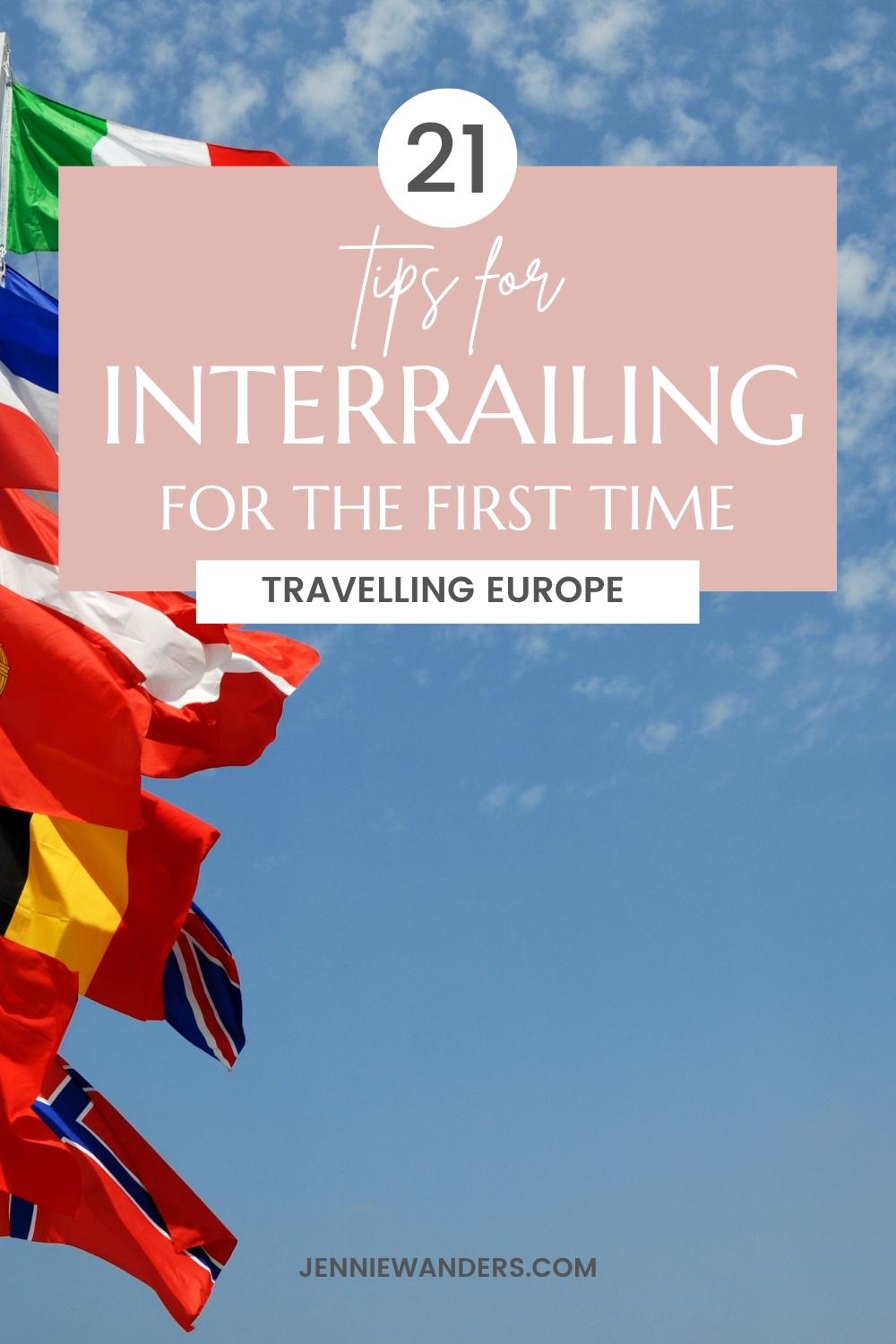
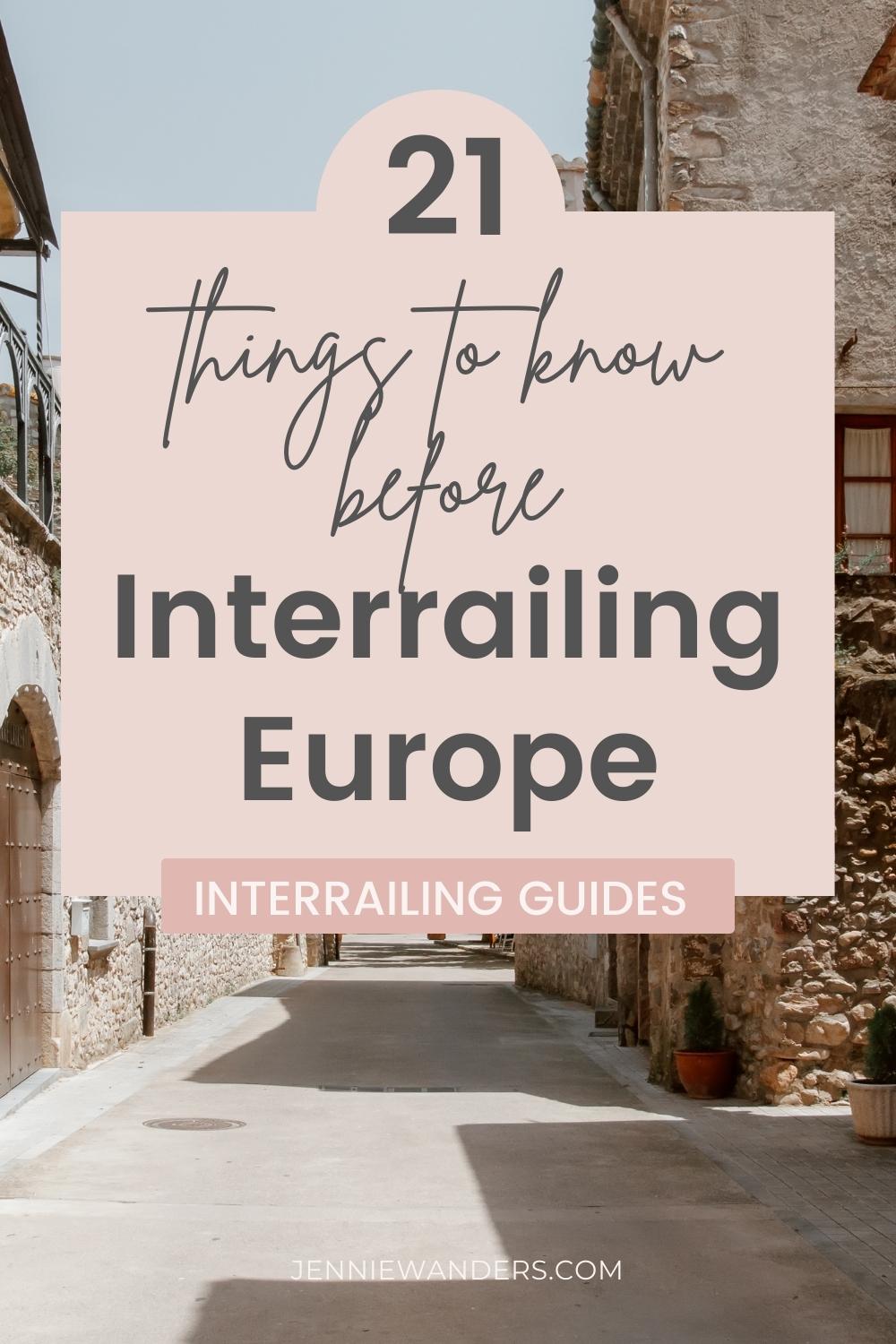
MEET THE AUTHOR!

Hi! I'm Jennie! As a part-time travel blogger based in London, I'm using my 10+ years of travel expertise to encourage & inspire you to step out of your comfort zone through sustainable, mindful and purposeful travel.
If I'm not writing, I'm either reading, drinking coffee or taking a wild swim (all at the same time if I'm feeling impressive).



